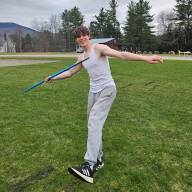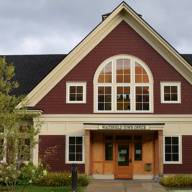This is the second part of a two-part Q&A with the three candidates for Washington-7’s two House of representative seats: Rebecca Baruzzi (I), Fayston, incumbent Kari Dolan (D), Waitsfield, and Dara Torre (D), Moretown.
VR: Why are you running as a Democrat/Independent?
Baruzzi:
I think the rhetoric of political parties is partially responsible for our soundbite culture and our growing inability to dialogue. I have not aligned with one political party in the last 20 years, and I suspect many of us do not squarely fit into one party’s platform or the other. In the last legislative session rank choice voting was being considered. This would shift the political landscape by allowing voters to choose their candidates in rank order, rather than just one vote. If elected, I look forward to supporting this legislation in the next session.
Dolan:
My reelection campaign focuses on people, community and our future. It is aligned with the Democratic vision of a Vermont that works for us all. As a Democrat, I am part of a dedicated team that takes action to benefit our neighbors, working families, women, businesses and our communities. This team supports me as I work to address the struggles that people face in our communities every day, such as affordable housing, the economy, access to child care, workforce challenges and equity issues. I work for our teachers and schools to ensure that our children have what they need to reach their potential. I work for clean water and air for all, seek solutions to reduce toxics in our environment, and promote strategies to achieve a more sustainable future. This team-based approach is essential to understanding the issues, evaluating options, and getting things done, especially during tough times.
Torre:
I’m honored to be running as a Democratic candidate, and for this opportunity to advance core goals of shared prosperity, social justice, a livable planet and the protection of our democracy. There’s nothing like running for office to make you acutely aware of the underpinnings of our representative democracy and the voting protections and campaign finance rules that help it thrive. To succeed in advancing the truly transformative policy needed to meet our affordability and climate crises requires respectful civil discourse and engagement to uncover what matters and reach cost-effective, equitable solutions even when priorities differ. I appreciate the support of community members who have thanked me for running and for their confidence in me to work collaboratively for our families and businesses. We’re in the midst of a generational leadership transition and I’ve come to recognize that we really are “the leaders we’ve been waiting for.”
VR: How will you balance the state’s push for expanding recreation throughout the state to increase tourism dollars with the need to protect fragile ecosystems, high elevation headwaters and deep wood species habitats?
Baruzzi:
The state’s push for tourism is impacted locally by how we request and apply state funds for this purpose. We control this locally. Protecting our natural resources is a community priority. The MRV Recreation District is working with Friends of the Mad River, conservation groups and trail groups in The Valley to determine how that can best be done. I am hopeful that this collaboration will promote thinking and acting as a five-town watershed.
The balance that is needed is between economic efforts in recreation and town efforts to ensure that we have opportunities to create housing for the middle and working class. The Waitsfield Planning Commission is working hard toward that end and I am eager to see the other towns commit resources to support this work.
Dolan:
Safeguarding biodiversity, particularly in more vulnerable natural areas, is a major topic globally and here in Vermont including my House Natural Resources Committee. In addition to biodiversity, natural areas are important to our local economy. These areas support outdoor recreation, tourism, forestry and our way of life such as hunting, fishing and birdwatching. Numerous state reports show that the largest threats to Vermont’s biodiversity are fragmentation of intact forest blocks and loss of “connected habitat” (which allows for species movement) caused by development. Other threats include climate change-related stressors such as flooding, pollution, and invasive species. I will continue to focus on: minimizing these larger threats and supporting the state’s new forest reserve initiative, conservation funding through the Housing and Conservation Fund and “Vermont Conservation Design” – a state initiative that brings together landowners, communities, universities, and others to identify, map and develop strategies to safeguard our must vulnerable areas.
Torre:
We have abundant trail resources thanks to the hardworking enthusiasts who have expanded multisport, year-round trail access. Locally, collaboration among the recreation district, trail organizations and the planning district has helped us reap tangible health and economic benefits. When considering an accessible cross-country ski trail in the town forest behind Moretown School, I experienced firsthand the complex interplay of woodland springs, a deeryard and goshawk nesting season. As a member of the Ridge to River stormwater taskforce, I’ve learned about stewardship in our watershed, best management practices and the impact of roads, driveways and trails. Robust local planning is key to enhancing forest integrity and setting policy that balances recreational development with protection of fragile ecosystems and habitats. The Mad River Valley Trails Collaborative and planning resources like ANR’s Act 171 planning guidance, the statewide Forest Stewardship Project and the Vermont Town Forest Recreation Planning Toolkit provide valuable models for this.
VR: Are you satisfied that Vermont’s education funding formula is providing substantially equal educational opportunities to Vermont students? The Legislature passed a new formula for weighting students for the purposes of providing per pupil funding. How will this impact taxpayers in your district?
Baruzzi:
Until this past legislative session, the per pupil funding model did not consider that students living in circumstances of poverty or English language learners require more services and resources to meet educational goals. The per pupil weights have been altered to reflect this and taxpayers will eventually see the adjustment to their education tax.
I imagine the taxpayers of our district will be impacted. While there certainly are families in the district that are in poverty and a few who are learning English, the number of students impacted locally are nowhere near the amount in other areas. The Legislature capped any tax increase to 5% per year and created a task force to measure the impact and effectiveness of this change.
Dolan:
The Legislature updated the education funding formula to uphold the Vermont constitution regarding equitable access to education, while retaining the longstanding tradition of local districts (including voters) controlling school budgets. Years ago, Vermont established a statewide education funding system to create equal educational opportunities among children. However, the weighting factors in the funding formula were not updated, resulting in an inequitable educational funding system that was in direct conflict with the Vermont Constitution. Reports showed that our district was one of many that has been inadvertently benefitting from the outdated and inequitable weighting factors. With overwhelming support from the governor and the Legislature, the bill passed which adjusted those weighting factors based on student needs and capped the amount our district’s tax rate can increase by 5% for five years or less. Under local control, our district has the task to keep spending at reasonable growth levels.
Torre:
I’m grateful for our local schools and to our dedicated teachers for the solid foundation my children received there. Although Vermont lawmakers took bold action to equalize education funding through an integrated state funding system, fairness has remained problematic. New legislation last session to update the funding formula is an attempt to improve how equitably costs are allocated across communities. For our district, this weighting formula change is still being assessed though there’s a provision for a cap if we can keep school budgets within defined parameters. Ensuring high-quality schools at a price tag we can all afford continues to be challenged by larger issues of declining enrollment, rising health care costs and pandemic-related impacts. I appreciate the leadership and hard work of our teachers, our school administrators and our school board in putting our students first while navigating this complexity and look forward to the community conversations ahead.













